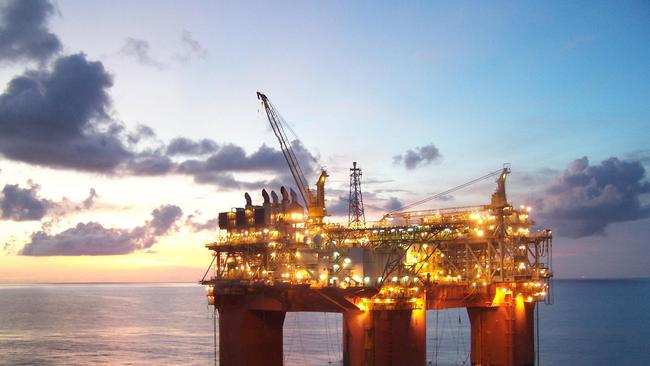BHP a big winner from Biden’s carbon attack
BHP stands to be one of the world’s bigger beneficiaries from the election of Joe Biden as US president, but its focus has shifted.

BHP stands to be one of the world’s bigger beneficiaries from the election of Joe Biden as US president.
Biden has fired the starter’s gun on a massive increase in global investment in decarbonisation and electrification, which will boost BHP’s copper and nickel operations.
But the global decarbonisation and electrification process will also require a lot of steel, which will underpin the iron ore and metallurgical coal prices.
Better still, Biden plans to restrict the amount of federal land that can be used for oil exploration and production. Add that to the decline in a number of the world’s large oilfields, and the sharp fall in investment during the last year, and there are clear higher oil price pressures over the next or two.
BHP continued its investment in the Gulf of Mexico and surrounding areas, so it is set to enjoy substantial rises in production in the next two years just as the Biden measures start to affect oil prices.
And the majority of those “Biden rewards” will go to BHP shareholders via dividends. In that context, it is fascinating that our two largest non-banking companies, BHP and CSL, have very different approaches to their long-term view of business. This was highlighted when new BHP chief financial officer David Lamont made his first BHP profit presentation after leaving CSL for the mining giant.
CSL invests enormous sums in research and development and is constantly looking for projects that will deliver profits in 10-15 years.
BHP’s research equivalent is exploration and these days most is concentrated in its own leases. Its 2020-21 expenditure will be down to $US600m — a token level given the size of the group.
Rather than conduct widespread grassroots exploration, BHP is constantly looking at what junior explorers are finding and will joint venture or buy them if it feels they may have a major deposit.
Fifteen years ago, when Lamont was previously at BHP, the company was very different, with a large exploration budget.
But shareholders are over the moon because in the latest half year BHP was able to pay out 116 per cent of its free cashflow because it had restrained its exploration and capital expenditure and the prices it is now receiving for its commodities are substantially above what it received in the December half year.
So BHP shareholders can expect further increases in profits and the high dividend rate may well be sustainable, especially as borrowings are slightly below the company’s budgeted range.
BHP is producing iron ore in Western Australia for about $US13 a tonne and it is selling that ore for about $US160. That is a huge margin.
In normal times, that would trigger BHP to substantially increase its production. But the company knows that China is planning major production in West Africa purely to diversify from Australia and Brazil. The production costs in West Africa will be many times the Australian level, so it is a Chinese investment in security rather than economics. So BHP does not invest the $20bn or so required for a large export increase (it is undertaking a small increase) and will enjoy the higher prices.
In the longer term, steel is a high-carbon product and, unless new production methods are found, it will be replaced by new non-carbon materials that are invented via nano technology and other means. So longer term BHP’s iron ore bonanza depends on discovering an economic way of converting iron ore to steel that does not involve lots of carbon. BHP is working with steel makers in China and Japan to develop low-carbon steelmaking.
This is an investment BHP must make and in many ways is akin to CSL and its research. Fortescue is undertaking a similar approach but is looking to make the “green steel” in Australia. Any development of steel via hydrogen reduction would make metallurgical coal redundant. But that is a long way off and, in the meantime, Australian high-grade metallurgical coal is much more carbon-efficient than poorer coal so is benefiting from the drive to lower emissions.
The two minerals that BHP expects to be both short and long-term winners from increased electrification is copper and nickel. The great Kambalda nickel operation that was almost put into mothballs a few years ago is now part of a new BHP thrust into nickel.
But sadly, the other asset BHP purchased with Western Mining is Olympic Dam. Olympic Dam is one of the world’s greatest deposits of copper. BHP hopes to lift production to 200,000 tonnes a year so that it will earn profits, but the great vision of an enormous copper mine has been shelved because of treatment difficulties.
Footnote: The discovery of Olympic Dam and Kambalda was a result of the genius of Western Mining’s chief geologist Roy Woodall, who died this week. At Western Mining, Woodall bought a team of people who applied very different geological concepts to the recognition and discovery of new minerals.
Apart from Kambalda and Olympic Dam, Woodall recognised the WA bauxite deposits that became the base of the Alcoa operation.
The genius of Woodall inspired a generation of geologists and exploration efforts that have shaped the nation’s mineral industry.
But as you can see from BHP, the larger companies are now about distributing rewards to shareholders rather than massive exploration.






To join the conversation, please log in. Don't have an account? Register
Join the conversation, you are commenting as Logout